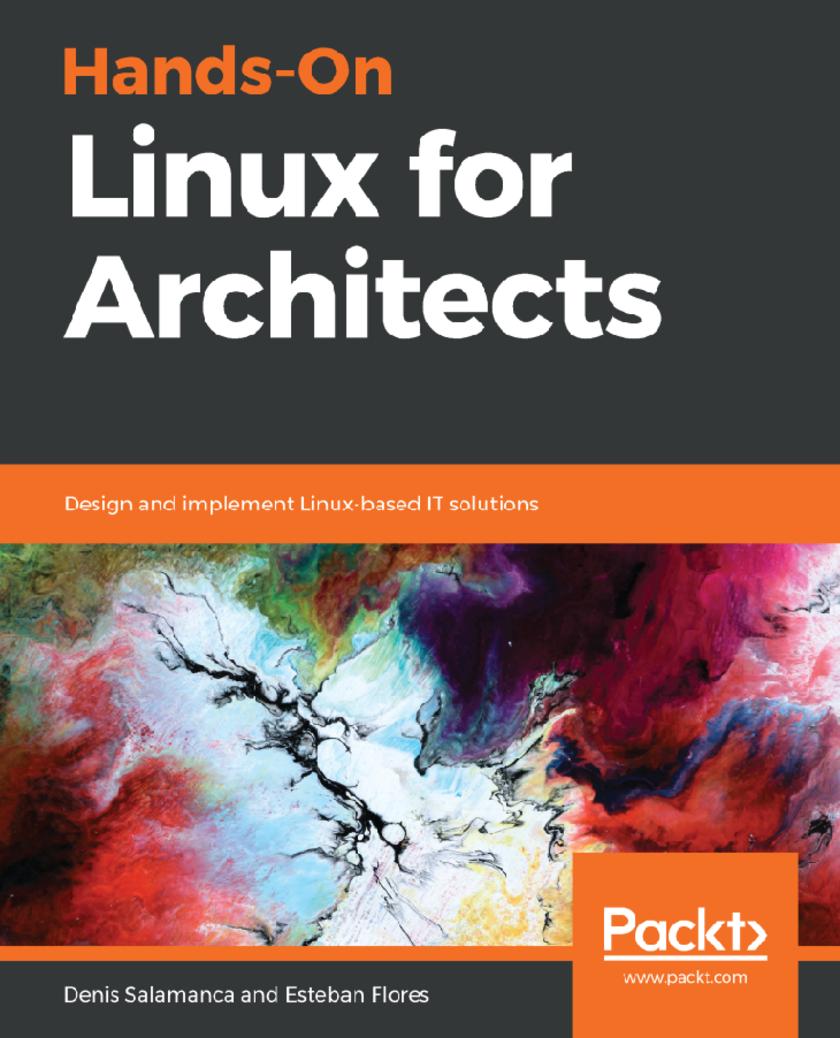
Hands-On Linux for Architects
¥70.84
Explore practical use cases to learn everything from Linux components, and functionalities, through to hardware and software support Key Features * Gain a clear understanding of how to design a Linux environment * Learn more about the architecture of the modern Linux operating system(OS) * Understand infrastructure needs and design a high-performing computing environment Book Description It is very important to understand the flexibility of an infrastructure when designing an efficient environment. In this book, you will cover everything from Linux components and functionalities through to hardware and software support, which will help you to implement and tune effective Linux-based solutions. This book gets started with an overview of Linux design methodology. Next, you will focus on the core concepts of designing a solution. As you progress, you will gain insights into the kinds of decisions you need to make when deploying a high-performance solution using Gluster File System (GlusterFS). In the next set of chapters, the book will guide you through the technique of using Kubernetes as an orchestrator for deploying and managing containerized applications. In addition to this, you will learn how to apply and configure Kubernetes for your NGINX application. You’ll then learn how to implement an ELK stack, which is composed of Elasticsearch, Logstash, and Kibana. In the concluding chapters, you will focus on installing and configuring a Saltstack solution to manage different Linux distributions, and explore a variety of design best practices. By the end of this book, you will be well-versed with designing a high-performing computing environment for complex applications to run on. By the end of the book, you will have delved inside the most detailed technical conditions of designing a solution, and you will have also dissected every aspect in detail in order to implement and tune open source Linux-based solutions What you will learn * Study the basics of infrastructure design and the steps involved * Expand your current design portfolio with Linux-based solutions * Discover open source software-based solutions to optimize your architecture * Understand the role of high availability and fault tolerance in a resilient design * Identify the role of containers and how they improve your continuous integration and continuous deployment pipelines * Gain insights into optimizing and making resilient and highly available designs by applying industry best practices Who this book is for This intermediate-level book is for Linux system administrators, Linux support engineers, DevOps engineers, Linux consultants or any open source technology professional looking to learn or expand their knowledge in architecting, designing and implementing solutions based on Linux and open source software. Prior experience in Linux is required.
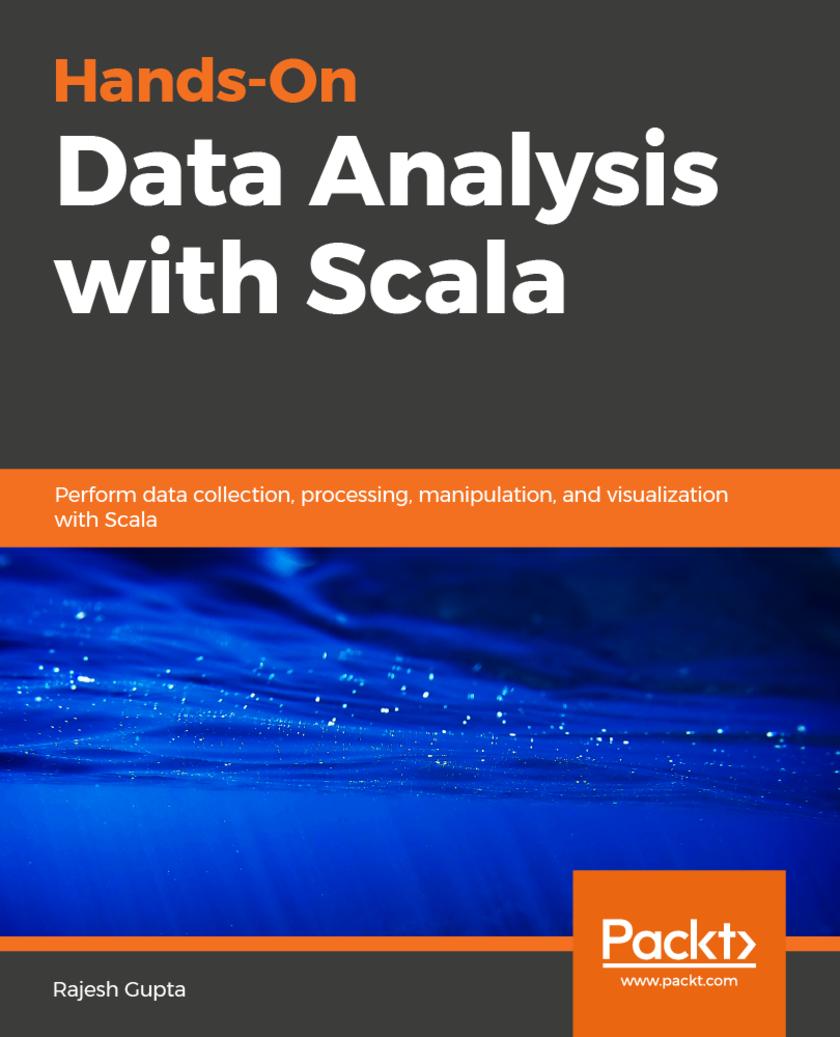
Hands-On Data Analysis with Scala
¥79.56
Master scala's advanced techniques to solve real-world problems in data analysis and gain valuable insights from your data Key Features * A beginner's guide for performing data analysis loaded with numerous rich, practical examples * Access to popular Scala libraries such as Breeze, Saddle for efficient data manipulation and exploratory analysis * Develop applications in Scala for real-time analysis and machine learning in Apache Spark Book Description Efficient business decisions with an accurate sense of business data helps in delivering better performance across products and services. This book helps you to leverage the popular Scala libraries and tools for performing core data analysis tasks with ease. The book begins with a quick overview of the building blocks of a standard data analysis process. You will learn to perform basic tasks like Extraction, Staging, Validation, Cleaning, and Shaping of datasets. You will later deep dive into the data exploration and visualization areas of the data analysis life cycle. You will make use of popular Scala libraries like Saddle, Breeze, Vegas, and PredictionIO for processing your datasets. You will learn statistical methods for deriving meaningful insights from data. You will also learn to create applications for Apache Spark 2.x on complex data analysis, in real-time. You will discover traditional machine learning techniques for doing data analysis. Furthermore, you will also be introduced to neural networks and deep learning from a data analysis standpoint. By the end of this book, you will be capable of handling large sets of structured and unstructured data, perform exploratory analysis, and building efficient Scala applications for discovering and delivering insights What you will learn * Techniques to determine the validity and confidence level of data * Apply quartiles and n-tiles to datasets to see how data is distributed into many buckets * Create data pipelines that combine multiple data lifecycle steps * Use built-in features to gain a deeper understanding of the data * Apply Lasso regression analysis method to your data * Compare Apache Spark API with traditional Apache Spark data analysis Who this book is for If you are a data scientist or a data analyst who wants to learn how to perform data analysis using Scala, this book is for you. All you need is knowledge of the basic fundamentals of Scala programming.
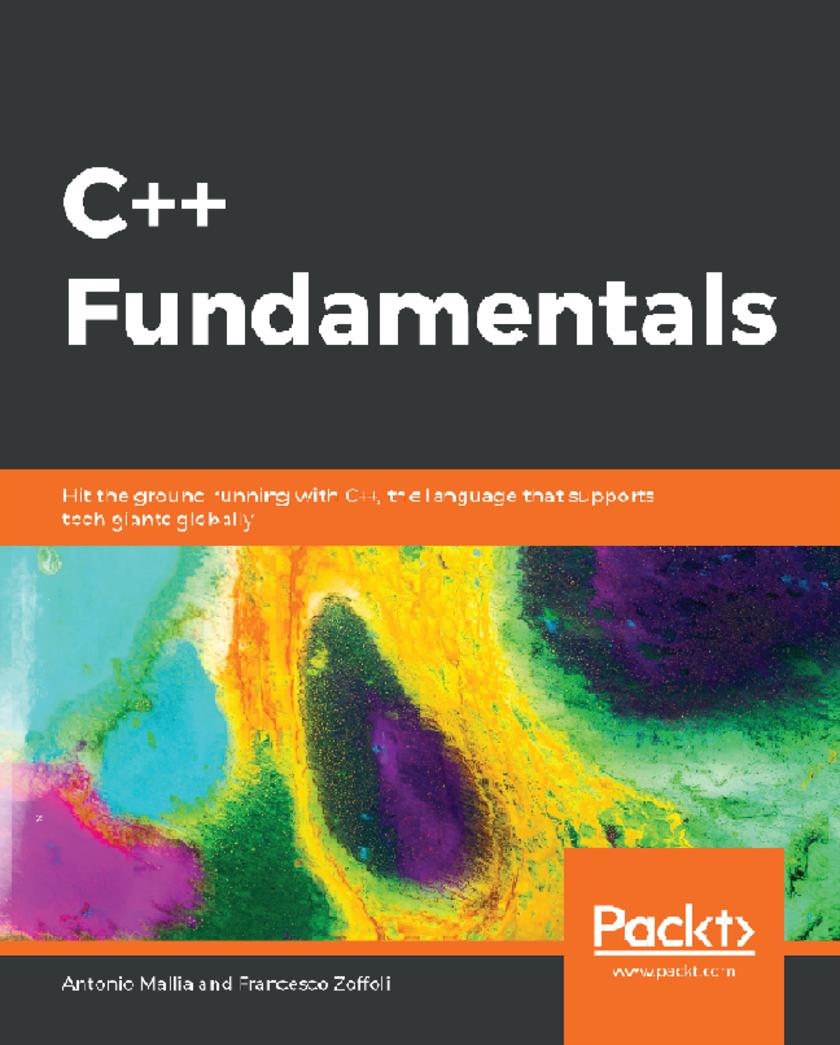
C++ Fundamentals
¥54.49
Write high-level abstractions while retaining full control of the hardware, performances, and maintainability. Key Features * Transform your ideas into modern C++ code, with both C++11 and C++17 * Explore best practices for creating high-performance solutions * Understand C++ basics and work with concrete real-world examples Book Description C++ Fundamentals begins by introducing you to the C++ syntax. You will study the semantics of variables along with their advantages and trade-offs, and see how they can be best used to write safe and efficient code. With the help of this book, you’ll be able to compile fully working C++ programs and understand how variables, references, and pointers can be used to manipulate the state of the program. Then you'll explore functions and classes — the features that C++ offers to organize a program — and use them to solve more complex problems such as functions and classes. You’ll also understand common pitfalls and modern best practices, especially the ones that diverge from the C++98 guideline. As you advance through the chapters, you’ll study the advantages of generic programming and write your own templates to make generic algorithms that work with any type. This C++ book will guide you in fully exploiting standard containers and understanding how to pick the appropriate container for each problem. You will even work with a variety of memory management tools in C++. By the end of this book, you will not only be able to write efficient code, but also be equipped to improve the readability, performance, and maintainability of your programs using standard algorithms. What you will learn * Work with the C++ compilation model and syntaxes * Apply best practices for writing functions and classes * Write safe, generic, and efficient code with templates * Explore the containers that C++ standard offers * Discover the new paradigms introduced with C++11, C++14, and C++17 * Get to grips with the core language features of C++ * Abstract complex problems using object-oriented programming in C++ Who this book is for If you’re a developer looking to learn a new powerful language or are familiar with C++ but want to update your knowledge with modern paradigms of C++11, C++14, and C++17, this book is for you. To easily understand the concepts in the book, you must be familiar with the basics of programming.
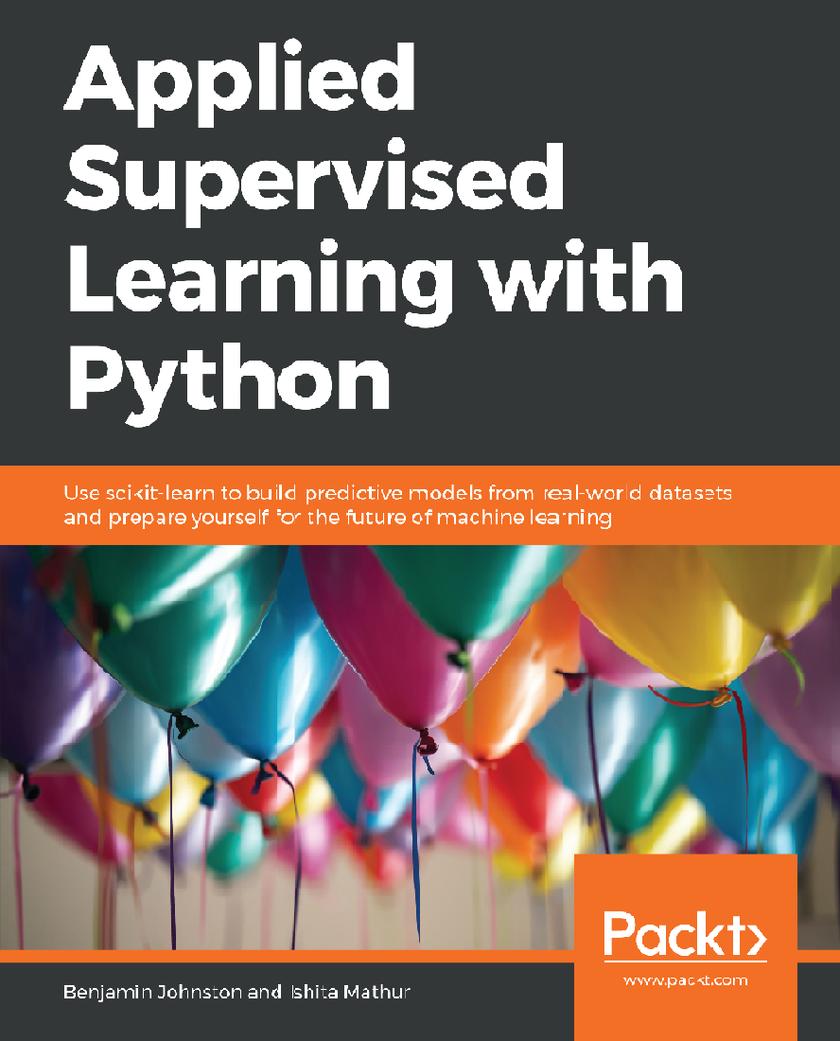
Applied Supervised Learning with Python
¥70.84
Explore the exciting world of machine learning with the fastest growing technology in the world Key Features * Understand various machine learning concepts with real-world examples * Implement a supervised machine learning pipeline from data ingestion to validation * Gain insights into how you can use machine learning in everyday life Book Description Machine learning—the ability of a machine to give right answers based on input data—has revolutionized the way we do business. Applied Supervised Learning with Python provides a rich understanding of how you can apply machine learning techniques in your data science projects using Python. You'll explore Jupyter Notebooks, the technology used commonly in academic and commercial circles with in-line code running support. With the help of fun examples, you'll gain experience working on the Python machine learning toolkit—from performing basic data cleaning and processing to working with a range of regression and classification algorithms. Once you’ve grasped the basics, you'll learn how to build and train your own models using advanced techniques such as decision trees, ensemble modeling, validation, and error metrics. You'll also learn data visualization techniques using powerful Python libraries such as Matplotlib and Seaborn. This book also covers ensemble modeling and random forest classifiers along with other methods for combining results from multiple models, and concludes by delving into cross-validation to test your algorithm and check how well the model works on unseen data. By the end of this book, you'll be equipped to not only work with machine learning algorithms, but also be able to create some of your own! What you will learn * Understand the concept of supervised learning and its applications * Implement common supervised learning algorithms using machine learning Python libraries * Validate models using the k-fold technique * Build your models with decision trees to get results effortlessly * Use ensemble modeling techniques to improve the performance of your model * Apply a variety of metrics to compare machine learning models Who this book is for Applied Supervised Learning with Python is for you if you want to gain a solid understanding of machine learning using Python. It'll help if you to have some experience in any functional or object-oriented language and a basic understanding of Python libraries and expressions, such as arrays and dictionaries.
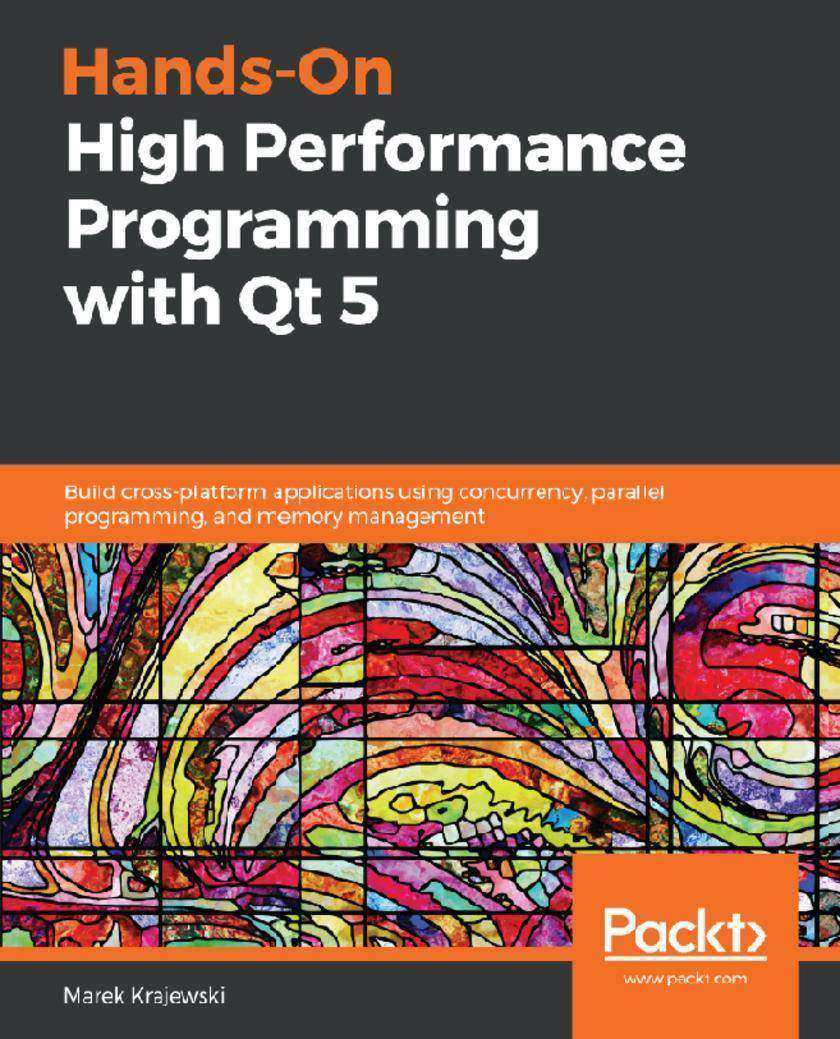
Hands-On High Performance Programming with Qt 5
¥81.74
Build efficient and fast Qt applications, target performance problems, and discover solutions to refine your code Key Features * Build efficient and concurrent applications in Qt to create cross-platform applications * Identify performance bottlenecks and apply the correct algorithm to improve application performance * Delve into parallel programming and memory management to optimize your code Book Description Achieving efficient code through performance tuning is one of the key challenges faced by many programmers. This book looks at Qt programming from a performance perspective. You'll explore the performance problems encountered when using the Qt framework and means and ways to resolve them and optimize performance. The book highlights performance improvements and new features released in Qt 5.9, Qt 5.11, and 5.12 (LTE). You'll master general computer performance best practices and tools, which can help you identify the reasons behind low performance, and the most common performance pitfalls experienced when using the Qt framework. In the following chapters, you’ll explore multithreading and asynchronous programming with C++ and Qt and learn the importance and efficient use of data structures. You'll also get the opportunity to work through techniques such as memory management and design guidelines, which are essential to improve application performance. Comprehensive sections that cover all these concepts will prepare you for gaining hands-on experience of some of Qt's most exciting application fields - the mobile and embedded development domains. By the end of this book, you'll be ready to build Qt applications that are more efficient, concurrent, and performance-oriented in nature What you will learn * Understand classic performance best practices * Get to grips with modern hardware architecture and its performance impact * Implement tools and procedures used in performance optimization * Grasp Qt-specific work techniques for graphical user interface (GUI) and platform programming * Make Transmission Control Protocol (TCP) and Hypertext Transfer Protocol (HTTP) performant and use the relevant Qt classes * Discover the improvements Qt 5.9 (and the upcoming versions) holds in store * Explore Qt's graphic engine architecture, strengths, and weaknesses Who this book is for This book is designed for Qt developers who wish to build highly performance applications for desktop and embedded devices. Programming Experience with C++ is required.
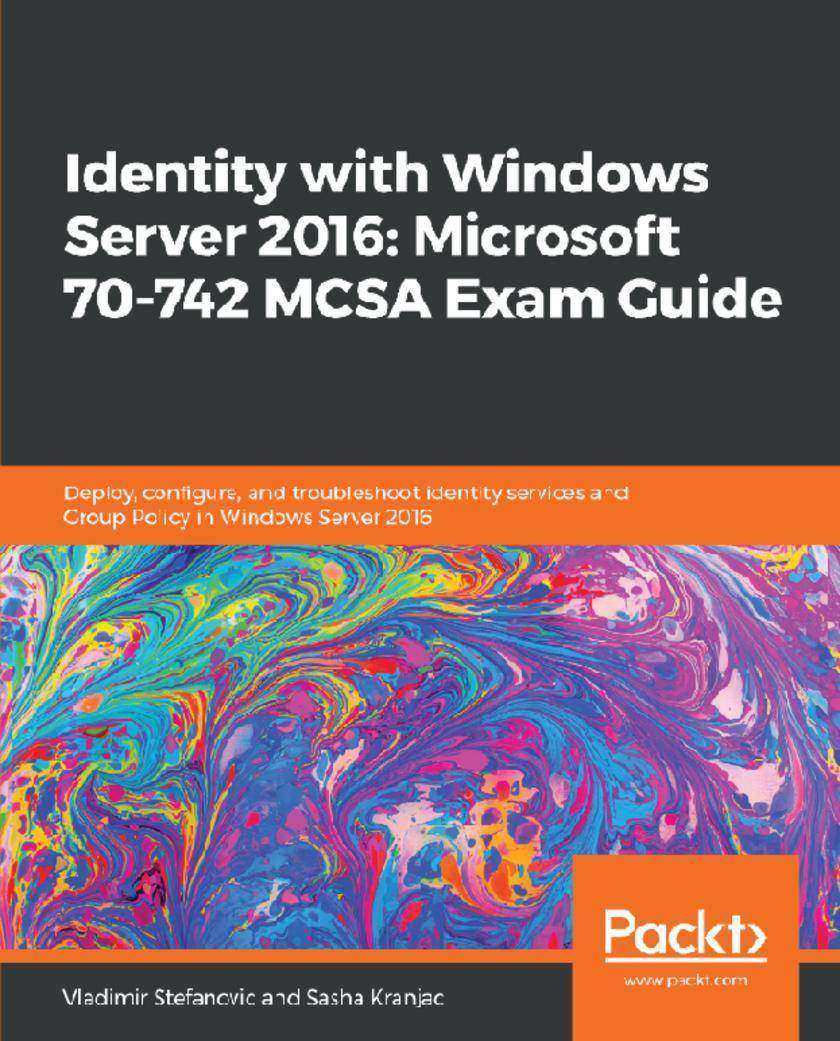
Identity with Windows Server 2016: Microsoft 70-742 MCSA Exam Guide
¥73.02
Equip yourself with the most complete and comprehensive preparation experience for Identity with Windows Server 2016: Microsoft 70-742 exam. Key Features * Helps you demonstrate real-world mastery of Windows Server 2016 identity features and functionality and prepare for 70-742 * Acquire skills to reduce IT costs and deliver more business value * Enhance your existing skills through practice questions and mock tests Book Description MCSA: Windows Server 2016 certification is one of the most sought-after certifications for IT professionals, which includes working with Windows Server and performing administrative tasks around it. This book is aimed at the 70-742 certification and is part of Packt's three-book series on MCSA Windows Server 2016 certification, which covers Exam 70-740, Exam 70-741, and Exam 70-742. This exam guide covers the exam objectives for the 70-742 Identity with Windows Server 2016 exam. It starts with installing and configuring Active Directory Domain Services (AD DS), managing and maintaining AD DS objects and advanced configurations, configuring Group Policy, Active Directory Certificate Services, and Active Directory Federation Services and Rights Management. At the end of each chapter, convenient test questions will help you in preparing for the certification in a practical manner. By the end of this book, you will be able to develop the knowledge and skills needed to complete MCSA Exam 70-742: Identity with Windows Server 2016 with confidence. What you will learn * Install, configure, and maintain Active Directory Domain Services (AD DS) * Manage Active Directory Domain Services objects * Configure and manage Active Directory Certificate Services * Configure and manage Group Policy * Design, implement, and configure Active Directory Federation Services * Implement and configure Active Directory Rights Management Services Who this book is for This book primarily targets system administrators who are looking to gain knowledge about identity and access technologies with Windows Server 2016 and aiming to pass the 70-742 certification. This will also help infrastructure administrators who are looking to gain advanced knowledge and understanding of identity and access technologies with Windows Server 2016. Familiarity with the concepts such as Active Directory, DNS is assumed.
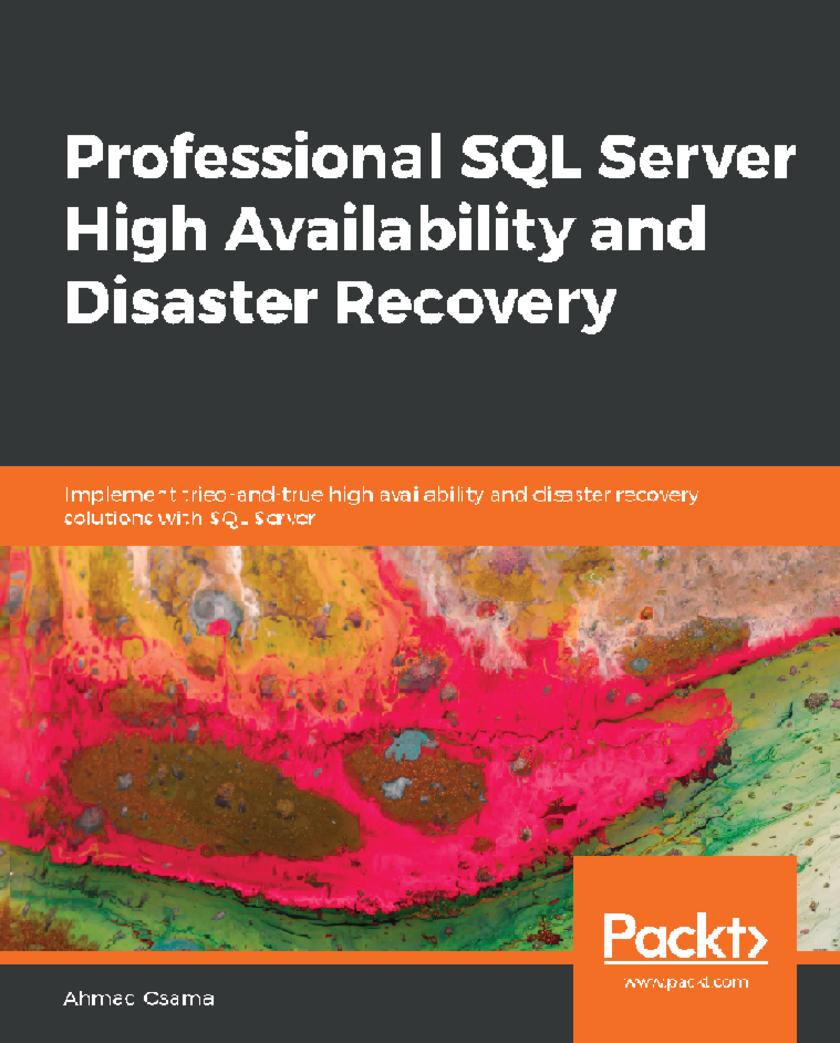
Professional SQL Server High Availability and Disaster Recovery
¥73.02
Leverage powerful features of the SQL Server and watch your infrastructure transform into a high-performing, reliable network of systems. Key Features * Explore more than 20 real-world use cases to understand SQL Server features * Get to grips with the SQL Server Always On technology * Learn how to choose HA and DR topologies for your system Book Description Professional SQL Server High Availability and Disaster Recovery explains the high availability and disaster recovery technologies available in SQL Server: Replication, AlwaysOn, and Log Shipping. You’ll learn what they are, how to monitor them, and how to troubleshoot any related problems. You will be introduced to the availability groups of AlwaysOn and learn how to configure them to extend your database mirroring. Through this book, you will be able to explore the technical implementations of high availability and disaster recovery technologies that you can use when you create a highly available infrastructure, including hybrid topologies. By the end of the book, you’ll be equipped with all that you need to know to develop robust and high performance infrastructure. What you will learn * Configure and troubleshoot Replication, AlwaysOn, and Log Shipping * Study the best practices to implement HA and DR solutions * Design HA and DR topologies for the SQL Server and study how to choose a topology for your environment * Use T-SQL to configure replication, AlwaysOn, and log shipping * Migrate from On-Premise SQL Server to Azure SQL Database * Manage and maintain AlwaysOn availability groups for extended database mirroring Who this book is for Professional SQL Server High Availability and Disaster Recovery is for you if you are a database administrator or database developer who wants to improve the performance of your production environment. Prior experience of working with SQL Server will help you get the most out of this book.
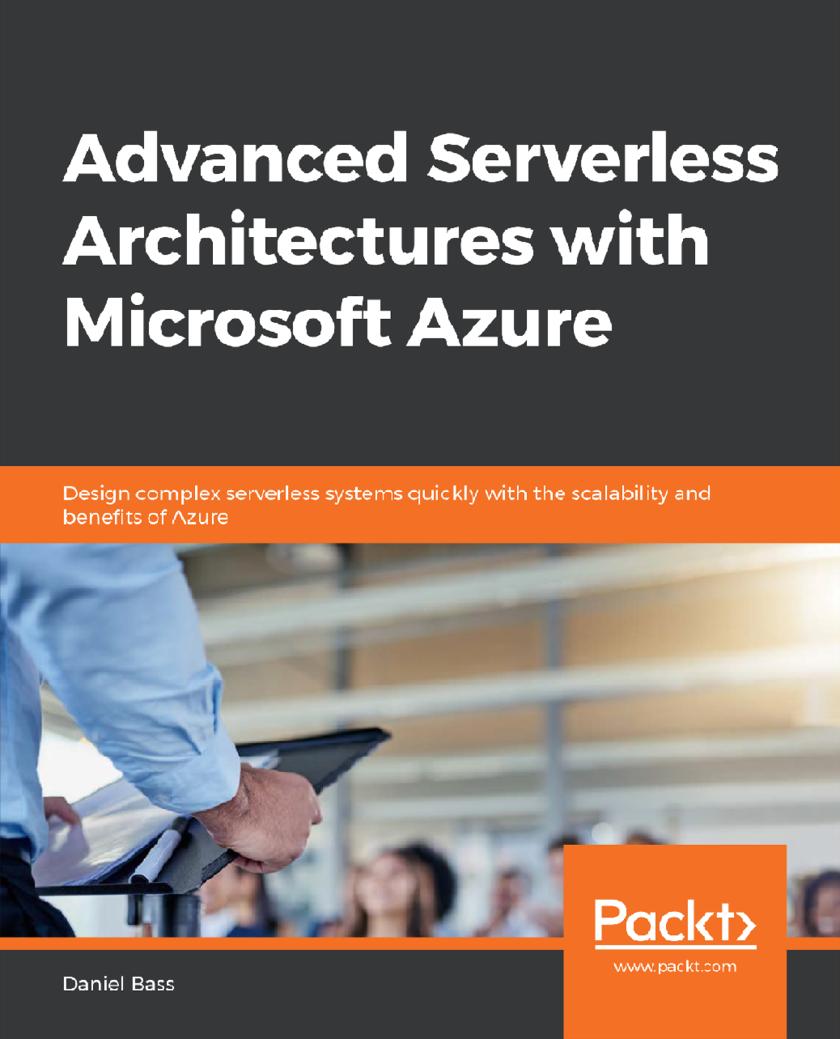
Advanced Serverless Architectures with Microsoft Azure
¥63.21
Build complex, observable, and fault-tolerant serverless systems easily on Microsoft Azure. Key Features * Use serverless systems to help you fulfill complex requirements * Develop your knowledge of Azure Microsoft Serverless * Understand concepts with a hands-on approach and helpful examples Book Description Advanced Serverless Architectures with Microsoft Azure redefines your experience of designing serverless systems. It shows you how to tackle challenges of varying levels, not just the straightforward ones. You'll be learning how to deliver features quickly by building systems, which retain the scalability and benefits of serverless. You'll begin your journey by learning how to build a simple, completely serverless application. Then, you'll build a highly scalable solution using a queue, load messages onto the queue, and read them asynchronously. To boost your knowledge further, the book also features durable functions and ways to use them to solve errors in a complex system. You'll then learn about security by building a security solution from serverless components. Next, you’ll gain an understanding of observability and ways to leverage application insights to bring you performance benefits. As you approach the concluding chapters, you’ll explore chaos engineering and the benefits of resilience, by actively switching off a few of the functions within a complex system, submitting a request, and observing the resulting behavior. By the end of this book, you will have developed the skills you need to build and maintain increasingly complex systems that match evolving platform requirements. What you will learn * Understand what true serverless architecture is * Study how to extend and scale architectures until they become ‘complex' * Implement durable functions in your design * Improve the observability of your serverless architecture * Implement security solutions using serverless services * Learn how to ‘practise' chaos engineering in production Who this book is for Advanced Serverless Architectures with Microsoft Azure is is ideal if you want to build serverless systems with fewer outages and high performance using Azure. Familiarity with the C# syntax and Azure Functions and ARM templates will help you to benefit more from this book. Prior knowledge of basic front-end development, HTML JS, and CSS is beneficial but not essential. Some DevOps knowledge is also beneficial but not essential.
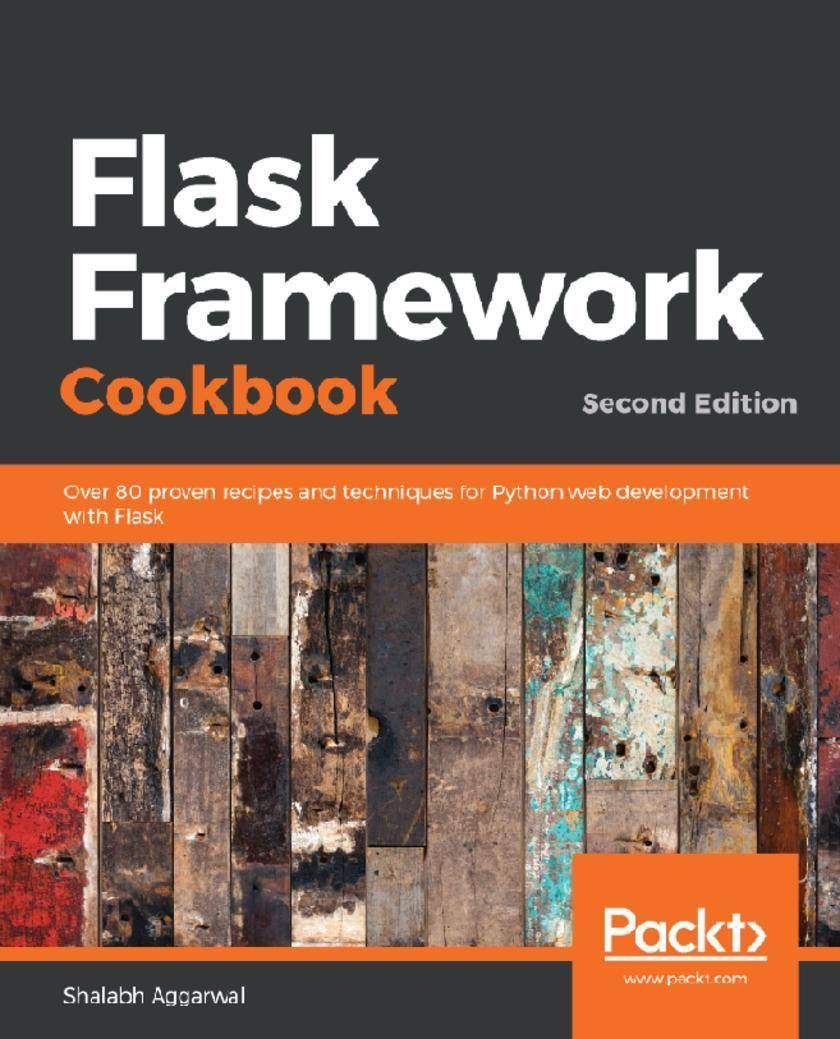
Flask Framework Cookbook
¥53.40
Build state-of-the-art web applications quickly and efficiently using Flask and related technologies with Python 3 Key Features * Updated to Flask 1.0.3 and Python 3.7 with coverage of Microservices * Get the most out of the powerful Flask framework and maintain the flexibility of your design choices * Write cleaner and maintainable code with the help of sample apps Book Description Flask, the lightweight Python web framework, is popular due to its powerful modular design that lets you build scalable web apps. With this recipe-based guide, you’ll explore modern solutions and best practices for Flask web development. Updated to the latest version of Flask and Python 3, this second edition of Flask Framework Cookbook moves away from some of the old and obsolete libraries and introduces recipes on bleeding edge technologies. You’ll discover different ways of using Flask to create, deploy, and manage microservices. This Flask Python book starts by covering the different configurations that a Flask application can make use of, and then helps you work with templates and learn about the ORM and view layers. You’ll also be able to write an admin interface and get to grips with debugging and logging errors. Finally, you’ll grasp a variety of deployment and post-deployment techniques for platforms such as Apache, Tornado, and Heroku. By the end of this book, you’ll have gained all the knowledge you need to write Flask applications in the best possible way and scale them using standard industry practices. What you will learn * Explore web application development in Flask, right from installation to post-deployment stages * Make use of advanced templating and data modeling techniques * Discover effective debugging, logging, and error handling techniques in Flask * Integrate Flask with different technologies such as Redis, Sentry, and MongoDB * Deploy and package Flask applications with Docker and Kubernetes * Design scalable microservice architecture using AWS LambdaContinuous integration and Continuous deployment Who this book is for If you are a web developer who wants to learn more about developing scalable and production-ready applications in Flask, this is the book for you. You’ll also find this book useful if you are already aware of Flask's major extensions and want to use them for better application development. Basic Python programming experience along with basic understanding of Flask is assumed.
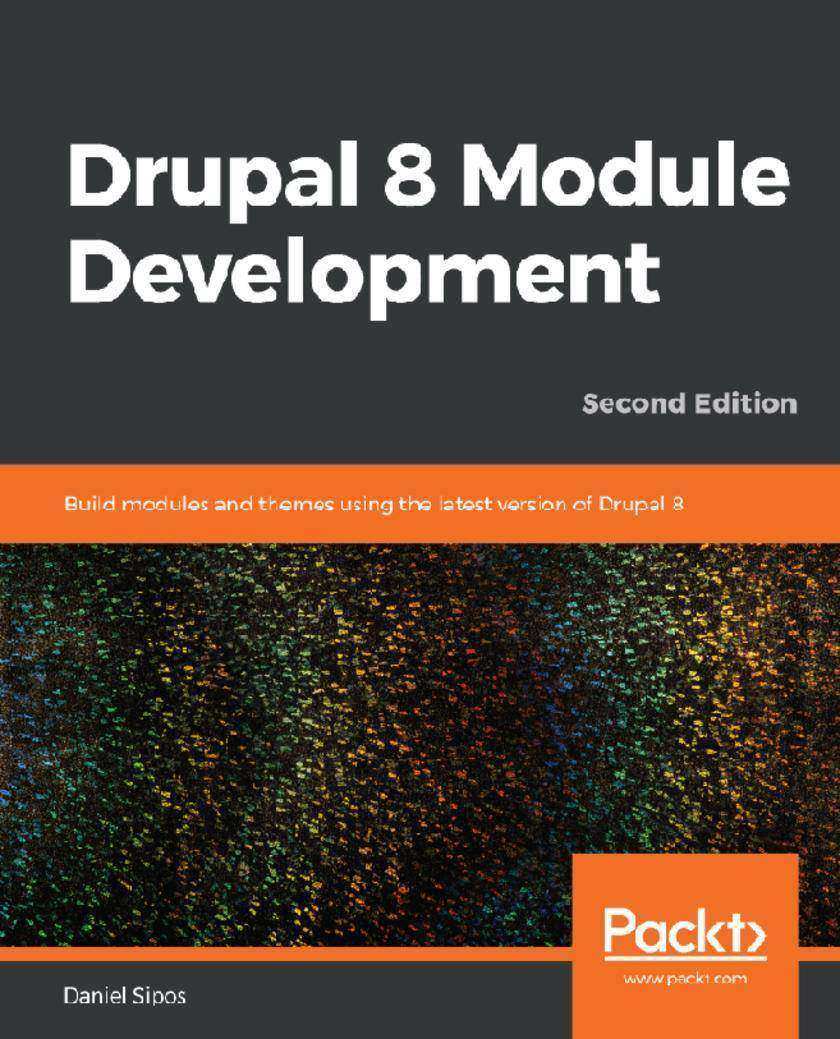
Drupal 8 Module Development
¥73.02
Learn to create and customize impressive Drupal 8 modules to extend your website's functionalities Key Features * Explore a plethora of Drupal 8 APIs and get the best out of them using the power of PHP coding * Learn to implement efficient data management and data security by creating dedicated modules for it. * Stay up to date with the changes introduced in the new Drupal 8 releases Book Description Drupal 8 comes with a release cycle that allows for new functionality to be added at a much faster pace. However, this also means code deprecations and changing architecture that you need to stay on top of. This book updates the first edition and includes the new functionality introduced in versions up to, and including 8.7. The book will first introduce you to the Drupal 8 architecture and its subsystems before diving into creating your first module with basic functionality. You will work with the Drupal logging and mailing systems, learn how to output data using the theme layer and work with menus and links programmatically. Then, you will learn how to work with different kinds of data storages, create custom entities, field types and leverage the Database API for lower level database queries. You will further see how to introduce JavaScript into your module, work with the various file systems and ensure the code you write works on multilingual sites. Finally, you will learn how to programmatically work with Views, write automated tests for your functionality and also write secure code in general. By the end, you will have learned how to develop your own custom module that can provide complex business solutions. And who knows, maybe you’ll even contribute it back to the Drupal community. What you will learn * Develop Drupal 8 modules that do all the things you want * Master numerous Drupal 8 sub-systems and APIs in the process * Model, store, manipulate and process data to serve your purposes * Display data and content in a clean and secure way using the Drupal 8 theme system * Test your business logic to prevent regressions * Stay ahead of the curve and write code following the current best practices Who this book is for The primary target of this book is Drupal developers who want to learn how to write modules and develop in Drupal 8. It is also intended for Drupal site builders and PHP developers who have basic Object Oriented Programming skills. A little bit of Symfony experience is helpful but not mandatory.
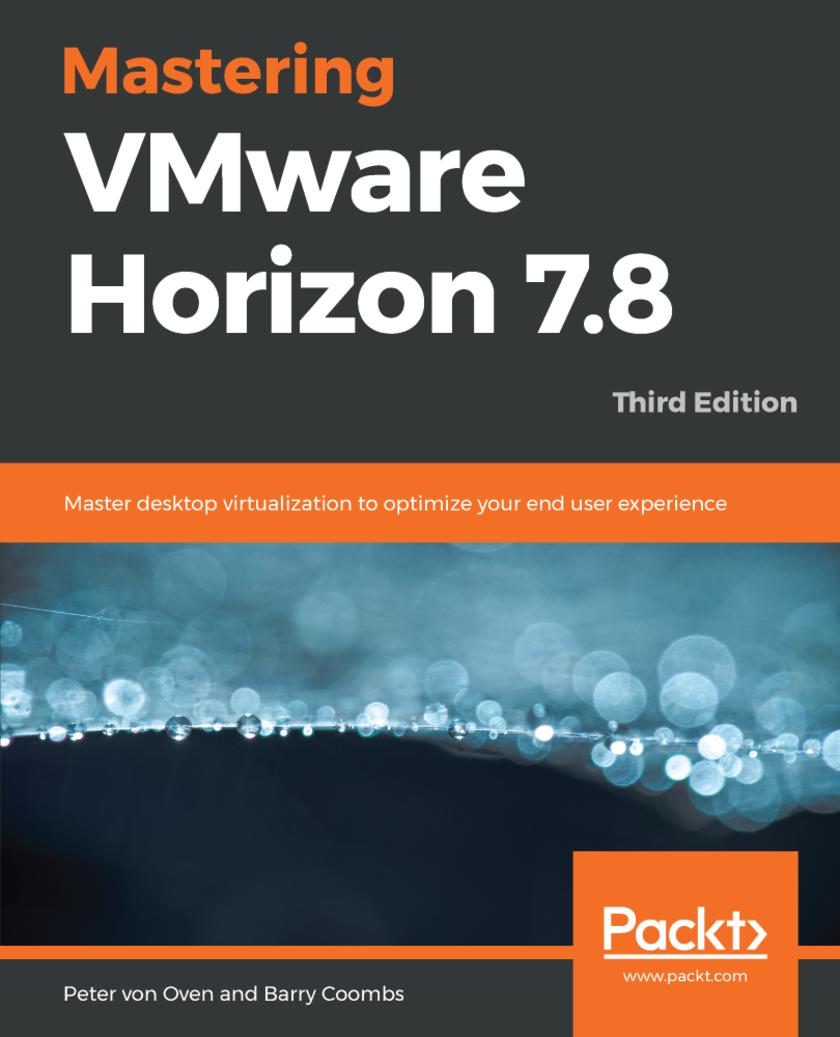
Mastering VMware Horizon 7.8
¥108.99
Discover advanced virtualization techniques and strategies to deliver centralized desktop and application services Key Features * Leverage advanced desktop virtualization techniques and strategies to transform your organization * Build better virtualized services for your users with VMware Horizon 7.8 * Develop and deploy end-to-end virtualized solutions Book Description Desktop virtualization can be tough, but VMware Horizon 7.8 changes all that. With a rich and adaptive UX, improved security,and a range of useful features for storage and networking optimization, there's plenty to love. But to properly fall in love with it, you need to know how to use it, and that means venturing deeper into the software and taking advantage of its extensive range of features, many of which are underused and underpromoted. This guide will take you through everything you need to know to not only successfully virtualize your desktop infrastructure, but also to maintain and optimize it to keep all your users happy. We'll show you how to assess and analyze your infrastructure, and how to use that analysis to design a solution that meets your organizational and user needs. Once you've done that, you'll find out how to build your virtualized environment, before deploying your virtualized solution. But more than that,we'll also make sure you know everything you need to know about the full range of features on offer, including the mobile cloud, so that you can use them to take full control of your virtualized infrastructure. What you will learn * Successfully configure Horizon 7.8 for the needs of your users * Deliver virtual desktops, session-based desktops, and hosted applications * Become familiar with how to develop, and deploy, a complete, end-to-end solution * Discover how to optimize desktop OS images for virtual desktops * Build, optimize, and tune desktop operating systems to deliver a superior end user experience * Explore the Horizon 7.8 infrastructure so that you can take full advantage of it Who this book is for This book is ideal for system admins, and solution architects interested in gaining hands-on experience with virtualization. It will take you to an advanced level, but at a pace that ensures you are always solving real-world problems. Some experience in desktop management using Windows and Microsoft Office (and familiarity with Active Directory, SQL, Windows Remote Desktop Session Hosting, and VMware vSphere technology) is necessary.
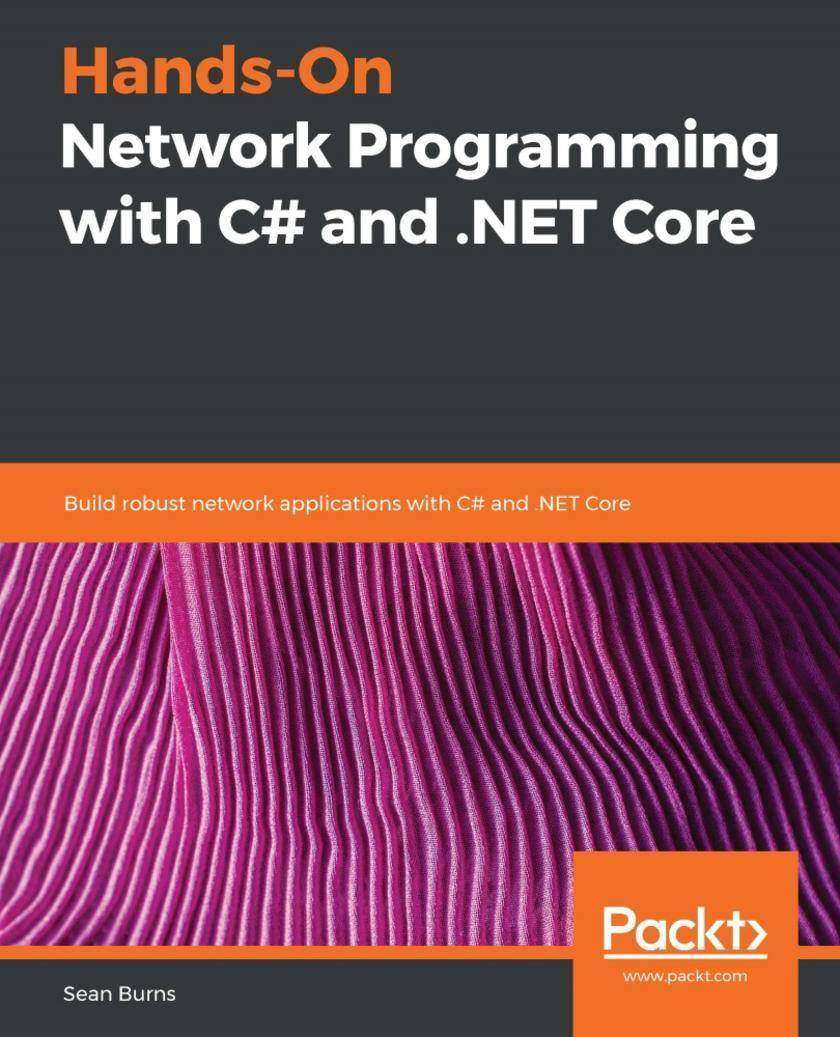
Hands-On Network Programming with C# and .NET Core
¥73.02
A comprehensive guide to understanding network architecture, communication protocols, and network analysis to build secure applications compatible with the latest versions of C# 8 and .NET Core 3.0 Key Features * Explore various network architectures that make distributed programming possible * Learn how to make reliable software by writing secure interactions between clients and servers * Use .NET Core for network device automation, DevOps, and software-defined networking Book Description The C# language and the .NET Core application framework provide the tools and patterns required to make the discipline of network programming as intuitive and enjoyable as any other aspect of C# programming. With the help of this book, you will discover how the C# language and the .NET Core framework make this possible. The book begins by introducing the core concepts of network programming, and what distinguishes this field of programming from other disciplines. After this, you will gain insights into concepts such as transport protocols, sockets and ports, and remote data streams, which will provide you with a holistic understanding of how network software fits into larger distributed systems. The book will also explore the intricacies of how network software is implemented in a more explicit context, by covering sockets, connection strategies such as Transmission Control Protocol (TCP) and User Datagram Protocol (UDP), asynchronous processing, and threads. You will then be able to work through code examples for TCP servers, web APIs served over HTTP, and a Secure Shell (SSH) client. By the end of this book, you will have a good understanding of the Open Systems Interconnection (OSI) network stack, the various communication protocols for that stack, and the skills that are essential to implement those protocols using the C# programming language and the .NET Core framework. What you will learn * Understand the breadth of C#'s network programming utility classes * Utilize network-layer architecture and organizational strategies * Implement various communication and transport protocols within C# * Discover hands-on examples of distributed application development * Gain hands-on experience with asynchronous socket programming and streams * Learn how C# and the .NET Core runtime interact with a hosting network * Understand a full suite of network programming tools and features Who this book is for If you're a .NET developer or a system administrator with .NET experience and are looking to get started with network programming, then this book is for you. Basic knowledge of C# and .NET is assumed, in addition to a basic understanding of common web protocols and some high-level distributed system designs.
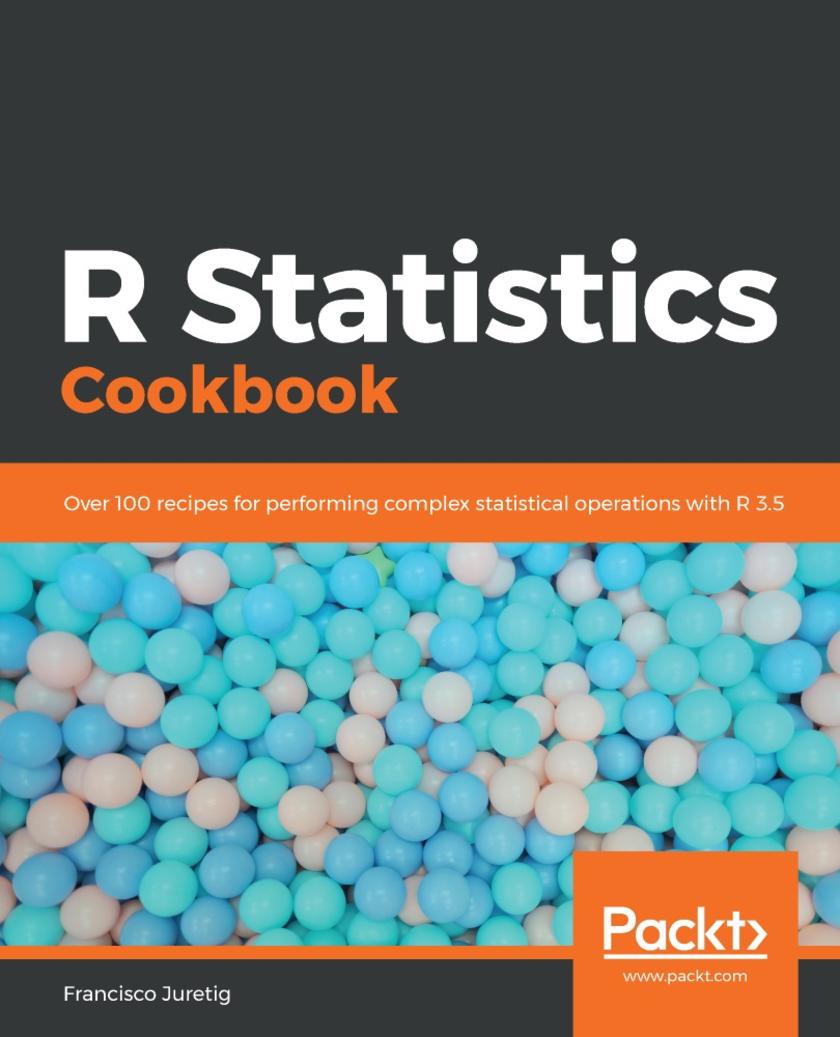
R Statistics Cookbook
¥45.77
Solve real-world statistical problems using the most popular R packages and techniques Key Features * Learn how to apply statistical methods to your everyday research with handy recipes * Foster your analytical skills and interpret research across industries and business verticals * Perform t-tests, chi-squared tests, and regression analysis using modern statistical techniques Book Description R is a popular programming language for developing statistical software. This book will be a useful guide to solving common and not-so-common challenges in statistics. With this book, you'll be equipped to confidently perform essential statistical procedures across your organization with the help of cutting-edge statistical tools. You'll start by implementing data modeling, data analysis, and machine learning to solve real-world problems. You'll then understand how to work with nonparametric methods, mixed effects models, and hidden Markov models. This book contains recipes that will guide you in performing univariate and multivariate hypothesis tests, several regression techniques, and using robust techniques to minimize the impact of outliers in data.You'll also learn how to use the caret package for performing machine learning in R. Furthermore, this book will help you understand how to interpret charts and plots to get insights for better decision making. By the end of this book, you will be able to apply your skills to statistical computations using R 3.5. You will also become well-versed with a wide array of statistical techniques in R that are extensively used in the data science industry. What you will learn * Become well versed with recipes that will help you interpret plots with R * Formulate advanced statistical models in R to understand its concepts * Perform Bayesian regression to predict models and input missing data * Use time series analysis for modelling and forecasting temporal data * Implement a range of regression techniques for efficient data modelling * Get to grips with robust statistics and hidden Markov models * Explore ANOVA (Analysis of Variance) and perform hypothesis testing Who this book is for If you are a quantitative researcher, statistician, data analyst, or data scientist looking to tackle various challenges in statistics, this book is what you need! Proficiency in R programming and basic knowledge of linear algebra is necessary to follow along the recipes covered in this book.
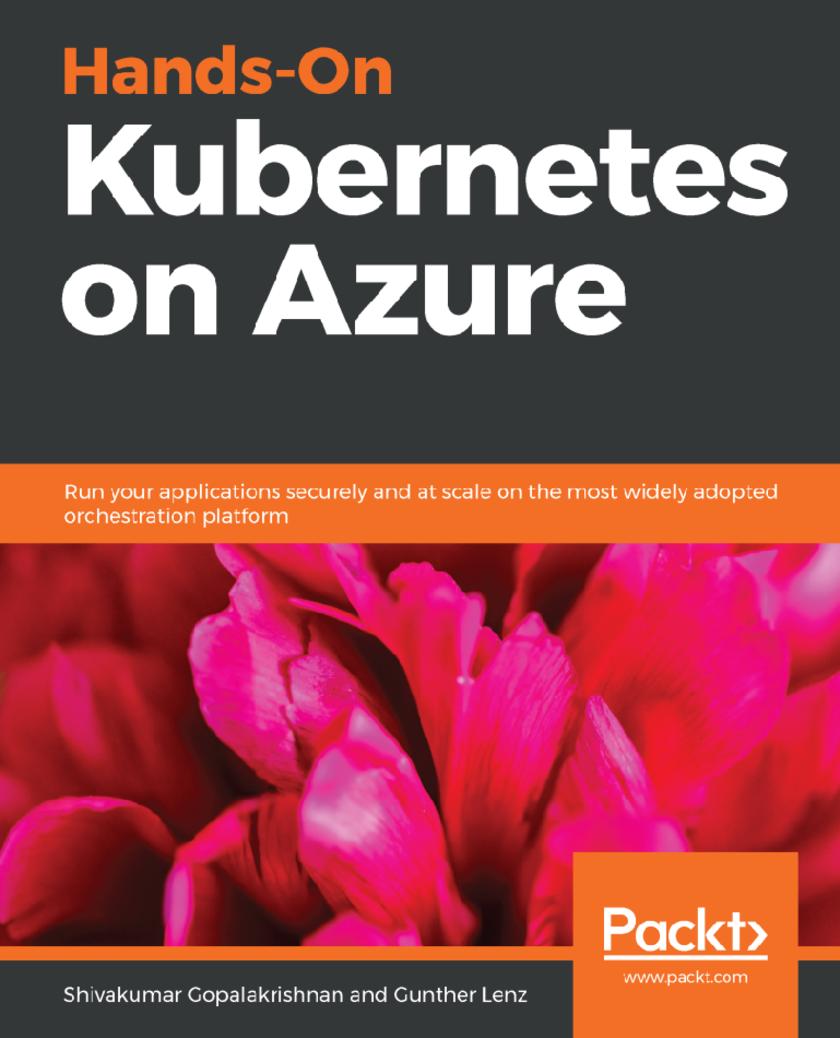
Hands-On Kubernetes on Azure
¥73.02
Efficiently deploy and manage Kubernetes clusters on a cloud Key Features * Deploy highly scalable applications with Kubernetes on Azure * Leverage AKS to deploy, manage, and operations of Kubernetes * Gain best practices from this guide to increase efficiency of container orchestration service on Cloud Book Description Microsoft is now one of the most significant contributors to Kubernetes open source projects. Kubernetes helps to create, configure, and manage a cluster of virtual machines that are preconfigured to run containerized applications. This book will be your resource for achieving successful container orchestration and deployment of Kubernetes clusters on Azure. You will learn how to deploy and manage highly scalable applications, along with how to set up a production-ready Kubernetes cluster on Azure. With this book, you will be able to reduce the complexity and operational overheads of managing a Kubernetes cluster on Azure. By the end of this book, you will not only be capable of deploying and managing Kubernetes clusters on Azure with ease, but also have the knowledge of industry best practices to work with advanced Azure Kubernetes Services (AKS) concepts for complex systems. What you will learn * Get to grips with Microsoft AKS deployment, management, and operations * Learn about the benefits of using Microsoft AKS, as well as the limitations, and avoid potential problems * Integrate Microsoft toolchains such as Visual Studio Code, and Git * Implement simple and advanced AKS solutions * Implement the automated scalability and high reliability of secure deployments with Microsoft AKS * Use kubectl commands to monitor applications Who this book is for If you’re a cloud engineer, cloud solution provider, sysadmin, site reliability engineer, or a developer interested in DevOps and are looking for an extensive guide to running Kubernetes in the Azure environment then, this book is for you. Though any previous knowledge of Kubernetes is not expected, some experience with Linux and Docker containers would be beneficial.
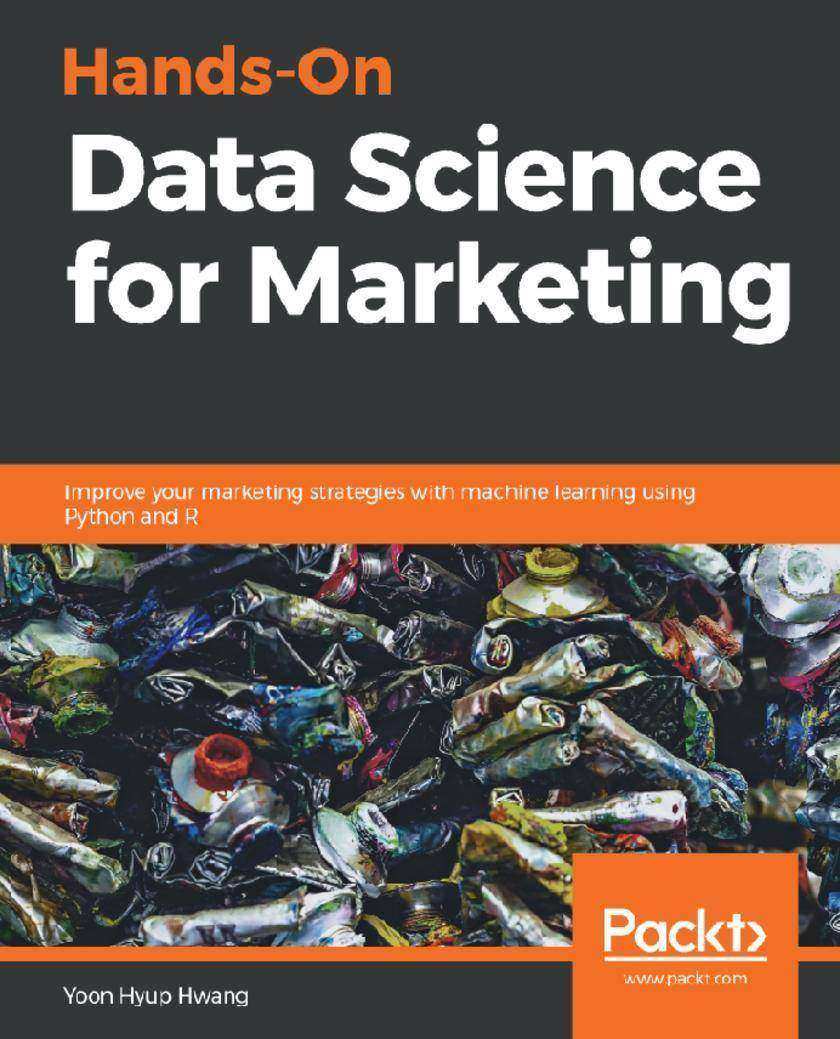
Hands-On Data Science for Marketing
¥81.74
Optimize your marketing strategies through analytics and machine learning Key Features * Understand how data science drives successful marketing campaigns * Use machine learning for better customer engagement, retention, and product recommendations * Extract insights from your data to optimize marketing strategies and increase profitability Book Description Regardless of company size, the adoption of data science and machine learning for marketing has been rising in the industry. With this book, you will learn to implement data science techniques to understand the drivers behind the successes and failures of marketing campaigns. This book is a comprehensive guide to help you understand and predict customer behaviors and create more effectively targeted and personalized marketing strategies. This is a practical guide to performing simple-to-advanced tasks, to extract hidden insights from the data and use them to make smart business decisions. You will understand what drives sales and increases customer engagements for your products. You will learn to implement machine learning to forecast which customers are more likely to engage with the products and have high lifetime value. This book will also show you how to use machine learning techniques to understand different customer segments and recommend the right products for each customer. Apart from learning to gain insights into consumer behavior using exploratory analysis, you will also learn the concept of A/B testing and implement it using Python and R. By the end of this book, you will be experienced enough with various data science and machine learning techniques to run and manage successful marketing campaigns for your business. What you will learn * Learn how to compute and visualize marketing KPIs in Python and R * Master what drives successful marketing campaigns with data science * Use machine learning to predict customer engagement and lifetime value * Make product recommendations that customers are most likely to buy * Learn how to use A/B testing for better marketing decision making * Implement machine learning to understand different customer segments Who this book is for If you are a marketing professional, data scientist, engineer, or a student keen to learn how to apply data science to marketing, this book is what you need! It will be beneficial to have some basic knowledge of either Python or R to work through the examples. This book will also be beneficial for beginners as it covers basic-to-advanced data science concepts and applications in marketing with real-life examples.




 购物车
购物车 个人中心
个人中心



